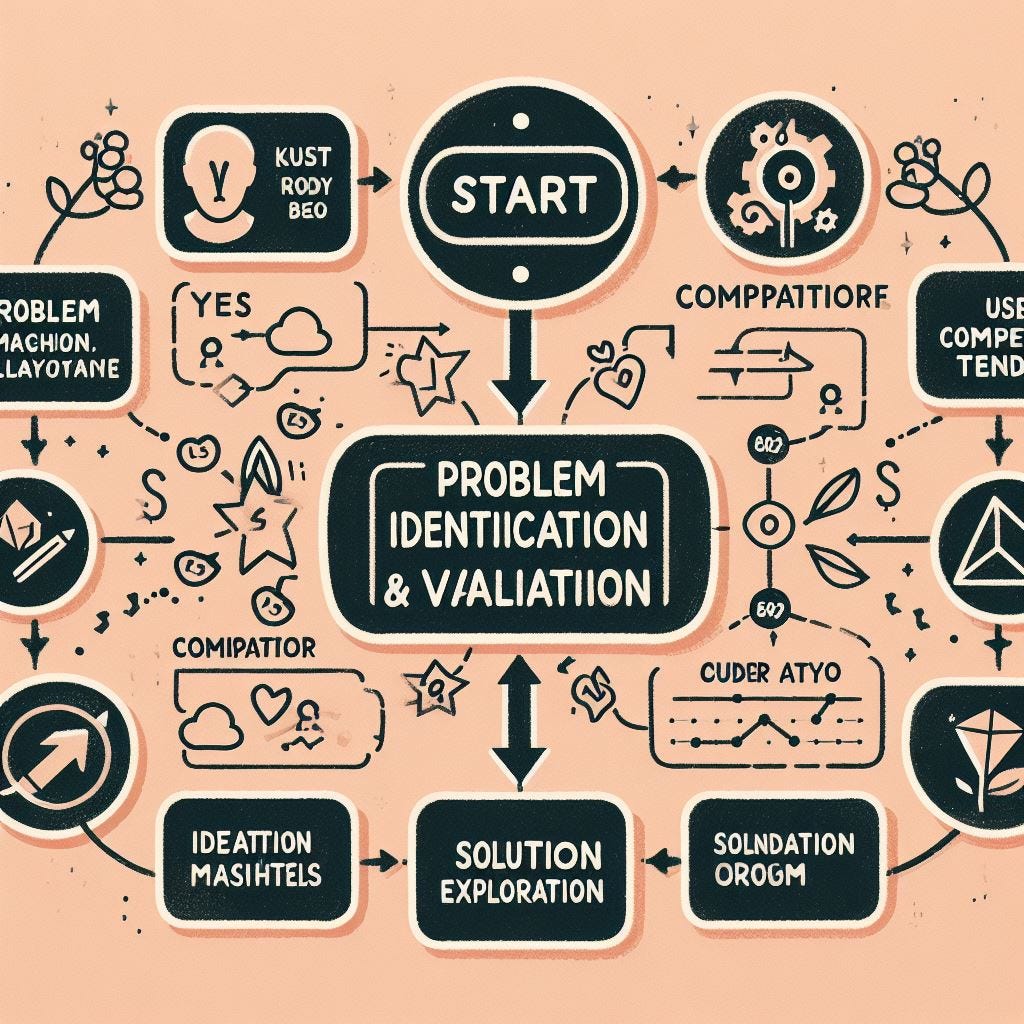A Comprehensive Framework for Rigorous Product Thinking
From Struggling PM to Product Success
Starting today and for the next few weeks, I’m going to share a ten-part playbook that I’ve been developing that guides you through the fundamental steps of Rigorous Product Thinking.
This work is the result of hundreds of hours of research, interviews, and synthesis. It’ll include brand-new frameworks, stories, and insights that I’ve never before shared.
Here’s what’s in store:
The Framework 🗺️
In this blog series, we'll dive deep into a framework designed to help you develop a rigorous product-thinking mindset. Here's a sneak peek at the key components we'll cover:
Step 0: Overview ← This post
Step 2: Market & Competitive Analysis
Step 3: User Segmentation
Step 4: Ideation & Solution Exploration
Step 5: Validation and Prototyping
Step 6: Value Proposition and MVP
Step 7: Measurement and Learning
Step 8: Iteration and Refinement
Step 9: Scaling, Monitoring, and Continuous Improvement
Following these steps (or any steps!) won’t guarantee success, but it’ll certainly increase your odds.
Meet Sarah, a product manager with a passion for solving problems through technology. She loves the challenge of building products that delight users, but lately, she's been hitting roadblocks. Her last launch fell flat, and she's been feeling lost about how to get back on track. Enthusiasm has faded into frustration. She watches competitor releases sail past hers, leaving her unsure of where she's going wrong.
Sound familiar? Building successful products is rarely a smooth ride. Market dynamics change, user needs evolve, and without the right tools, even the most dedicated product managers can lose their way.
There has to be a better way, but where can she find it?
Like many product managers, Sarah often relies on her instincts and industry knowledge. However, she's realizing that this approach doesn't guarantee success.
It's easy to fall into the trap of relying on intuition, chasing shiny ideas, or getting bogged down by a sea of feature requests. Without a structured process, product development can feel chaotic and directionless. This leads to:
Wasted Resources: Products built on assumptions rather than data.
Misaligned Goals: Features that don't truly resonate with users.
Disappointment: a feeling of missing the mark and not creating real value.
She's pouring time and resources into solutions that aren't fixing the real problems.
Determined to turn things around, Sarah dives into research. She seeks out best practices, reads industry blogs, and invests in online courses. She's hopeful this will be the turning point, giving her the tools she's been missing.
During her research, Sarah stumbles across a comprehensive framework for rigorous product thinking. This framework promises to be the guide she needs—a map to help her navigate the complexities of product development. It emphasizes the importance of deep user understanding, data-driven decisions, and continuous iteration. This framework isn't just about having a checklist; it's about transforming your mindset and equipping yourself with the knowledge to consistently build products that solve real problems and deliver user value.
Could this be the "crystal ball" to illuminate the path forward?
This framework will be our roadmap as we follow Sarah's journey toward successful product development. In the coming blog posts, we'll see how she uses it to overcome challenges and create products users love. Here's what we'll cover:
Problem Identification & Validation
...and more!
Remember how Netflix transformed from a DVD rental business into a streaming giant? Their success hinged on understanding the shifting needs of their users. This framework offers a similar path to understanding users deeply, leading to transformative product decisions.
In our next post, we'll explore how Sarah uses the framework to get crystal clear on the problems she's solving—and how you can do the same.
Want more inspiration?
Check out these resources for in-depth product case studies:
Let’s discuss:
Can you relate to Sarah's initial struggles? Have you ever wished for a roadmap to guide your product thinking? Share your experiences in the comments below!


